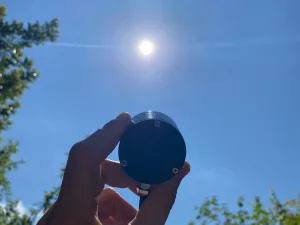Today (18/06/25) I carried out some UV light hazard measurements in my back garden, with the temperature sitting at a pleasant 24°C.
After weighting the results to the actinic hazard curve and applying the necessary correction factors, I found that the potential for overexposure to UV radiation on unprotected skin could exceed statutory workplace exposure limits values (ELVs) in just under 15 minutes.

To be clear, these statutory exposure limits do NOT apply to natural sunlight, but this interesting comparison serves to highlight how easily the UV light ELVs can be exceeded under certain conditions.
On a day like today, with strong UV-B levels present, the body typically gives a natural warning – the onset of erythema (sunburn) – that you’ve been overexposed.
When working with artificial sources that emit shorter UV-B and/or UV-C wavelengths, the effects are the same – you’ll receive the warning signs that over exposure has occurred, and although unpleasant, act as a deterrent to ensure you prevent it from happening again.
However, when working with artificial sources that only emit UV-A, overexposure rarely results in erythema, but rather contributes to cumulative lifetime UV dose, increasing the risk of elastosis (premature skin aging) and skin cancer.
It’s also important to note that the statutory exposure limits for UV-A to the eyes are more stringent than those for skin. For this reason, eye protection (EN 170) should always be worn when working with or around UV-A equipment – even if the source doesn’t appear intensely bright or dangerous due to the lack of visible light, in the same way you wouldn’t look directly at the sun.
When it comes to UV-B and UV-C, the allowable exposure durations tend to be extremely short, often just a few seconds. Because of this, personal exposure should be completely eliminated wherever possible through engineering and technical controls, or as a last resort, full PPE.
If your company uses any type of artificial UV light – for inspection, disinfection or curing – you are legally obliged to manage risks under UK laws and regulations. This includes:
- Carrying out risk assessments
- Ensuring suitable protective measures are in place
- Complying with statutory exposure limits
- Providing training and information to employees
To support businesses in understanding and managing these risks, we offer:
- A free UV Safety Webinar covering the risks associated with exposure to artificial UV light, statutory exposure limits, laws and regulations.
- A half-day UV Risk Management Training Course, designed for health and safety professionals and those responsible for equipment using artificial UV light.
If you’d like to register for the webinar or book a training session, please get in touch.